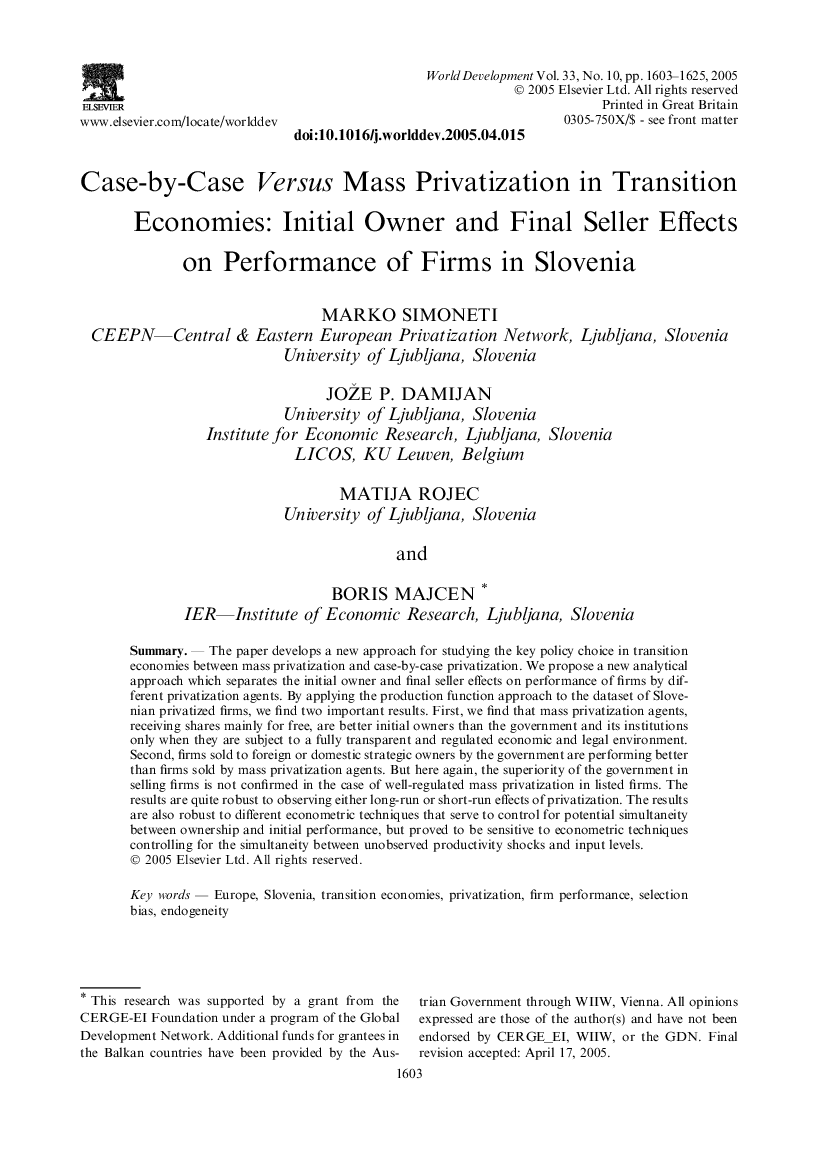| Article ID | Journal | Published Year | Pages | File Type |
|---|---|---|---|---|
| 10485174 | World Development | 2005 | 23 Pages |
Abstract
The paper develops a new approach for studying the key policy choice in transition economies between mass privatization and case-by-case privatization. We propose a new analytical approach which separates the initial owner and final seller effects on performance of firms by different privatization agents. By applying the production function approach to the dataset of Slovenian privatized firms, we find two important results. First, we find that mass privatization agents, receiving shares mainly for free, are better initial owners than the government and its institutions only when they are subject to a fully transparent and regulated economic and legal environment. Second, firms sold to foreign or domestic strategic owners by the government are performing better than firms sold by mass privatization agents. But here again, the superiority of the government in selling firms is not confirmed in the case of well-regulated mass privatization in listed firms. The results are quite robust to observing either long-run or short-run effects of privatization. The results are also robust to different econometric techniques that serve to control for potential simultaneity between ownership and initial performance, but proved to be sensitive to econometric techniques controlling for the simultaneity between unobserved productivity shocks and input levels.
Related Topics
Social Sciences and Humanities
Economics, Econometrics and Finance
Economics and Econometrics
Authors
Marko Simoneti, Jože P. Damijan, Matija Rojec, Boris Majcen,
